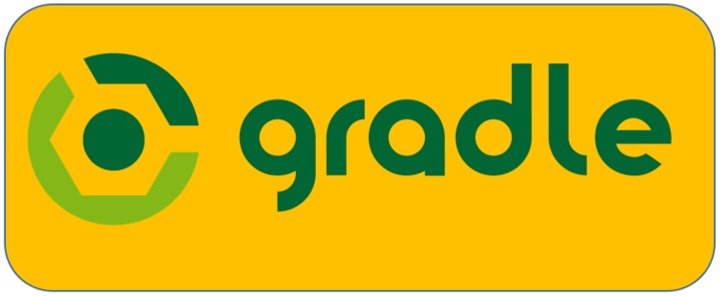Gradle, an open source build automation tool, automates the basic integrated tasks of software packages and websites.
- Building
- Testing
- Publishing
- Deployment
It combines the power and flexibility of Ant with the Dependency Management and conventions of Maven to get the best of both and evolve into an effective way to build, Test and deploy high quality software.
Gradle is an advanced build system as well as an advanced build automation tool it allowing to create custom build logic through plugins. Gradle addresses the basic expectations from a robust build tool to ensure various things.
- Version Control
- Code Quality
-
- Comments
- Unit tests
- Duplication
- Complexity
- Coding rules
- Potential bugs
- Architecture & Design
- Compilation for Publishing & Deployment
Gradle boasts of niche features making it a good choice for teams.
Noteworthy Features of Gradle
- Gradle is a Domain Specific Language (DSL)
- Gradle, one of the first Build Integration Tools provides Declarative Builds and Build-By-Convention
-
- Gradle brings coherence to your project by serving as the build authority
- Pushes declarative builds to the next level by providing declarative language elements that can be assembled as per the need
- Elements also provide build-by-convention support for Java, Groovy, OSGi, Web and Scala projects
- Gradle offers fully programmable and high performance builds
- It handles Multi-project builds & partial builds
- In a single subproject, Gradle takes care of building all the sub-projects that sub-projects depend on
- It avoids unnecessary workload by caching
-
- Remote metadata and artifacts
- Transitive dependency resolution
- Build execution plan
- Plugin inputs and outputs
- Gradle offers uniform cross platform builds
-
- Built to run on the JVM, Gradle has top-notch support for automating projects written in Java and other JVM languages including Groovy, Scala and Clojure
- Gradle fills a key development need by providing a general purpose aggregate compiler rooted in strong conventions
- Gradle allows Incremental and Partial builds
- Built-in and third-party tool reports that get generated during a Gradle build to facilitate local development and meet compliance requirements
- Gradle offers built in features for testing & efficient Test executions
-
- The project health is constantly monitored using Gradle
- Tests and code coverage helps see which tests passed, failed and consumed extra time
- Code quality and analysis tools are included in Gradle
- It is truly a Language for Dependency Based Programming and offers many prudent ways to manage dependencies
-
- The declarative language lies on top of a general purpose task graph
- This can be fully leveraged in builds
- It provides utmost flexibility to adapt Gradle to your specific needs
- Gradle provides convenient support for any strategy for dependencies
-
- Transitive dependency management with remote Maven
- Ivy repositories
- Jars
- Directories on the local file system
- Gradle provides a deep import for any Ant project, turning Ant targets into native Gradle tasks at runtime
- Gradle’s declarative dependencies allow the following
-
- Track the qualified name, version and scope of all external dependencies
- Organize dependencies into existing configurations
- Peek inside configurations to determine which artifacts were resolved
- Model project relationships using the same declarative style as external dependencies
- It allows monitoring and customization of its configuration and execution behavior to its very core
Advantages
- Gradle offers all advantages of Maven and reuse of Maven repositories
- Gradle allows writing of build script with a functional programming language
- Possibility to write tasks based on task ant model in Groovy
- It promotes integration with Ivy repositories
- Polyglot build system to integrate projects with different technologies and programming languages
- Gradle promotes ease of migration
Advantages offered by Gradle Components
Gradle Daemon
- Reduces startup time to near zero
- It enhances incremental builds
- Reuses execution plan between subsequent builds is possible
- Monitors changes to make builds reactive
- Allows seamless movements between the IDE and command line
- Performs preemptive work and maintenance tasks
Gradle Wrapper
- The Wrapper allows to execute Gradle builds on machines where it is not installed
- It is useful for some continuous integration servers
- It is also useful for an open source project to keep the barrier low for building it
- The wrapper is a zero administration approach for the client machines
- It also enforces the usage of a particular Gradle version thus minimizing support issues
Groovy
- Gradle’s build scripts are written in Groovy, not XML
- The whole design of Gradle is oriented towards being used as a language, not as a rigid framework
- Groovy allows you to tell your individual story with the abstractions Gradle provides
- Gradle provides some standard stories but they are not privileged in any form
- This is for us a major distinguishing feature compared to other declarative build systems
Conclusion
We, at SPEC QA recognize the obvious advantages of both automated and manual testing services. To increase the reliability of software quality checks and improving the efficiency of the software testing processes, we invests in research in various contemporary techniques.
Request a FREE POC to Test Drive our services.






